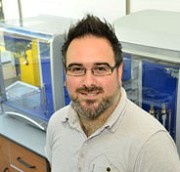Discussion
Research into helminth derived extracellular vesicles (EVs) has exploded since their first discovery. Initial forays aimed at characterising the constituent components of these EVs, often using a range of omic technologies, has revealed proteins and microRNAs as some of the key biomolecules. Helminth EV research has now progressed into more functional studies aimed at uncovering their role in the host-parasite interaction including host cell incorporation of helminth EVs and the potential impacts of EVs on the host immune response. Our research has focused on alternative aspects of helminth EV biology. Our starting position was to evaluate EV purification and we have progressed utilising size exclusion chromatography as our technology of choice for future functional EV studies. We have since explored EVs in a variety of flatworms including Fasciola hepatica, Calicophoron daubneyi and Anoplocephala perfoliata incorporating GeLC based proteomics supported by electron microscopy and nano-particle tracking. Functional analysis has then focused on the role EVs may play in anthelmintic exposure with evidence supporting a role for EVs in sequestering anthelmintics. Further evidence likely supports a detoxification capacity within helminth EVs. Further functional experimentation has driven research into the role EVs likely play with the host microbiome. We have demonstrated the first direct evidence of helminth EV microbiome manipulation. Using an in vitro model of rumen fermentation we demonstrate that EVs produced from C. daubneyi directly influence rumen bacteria. There are likely several proposed mechanisms as to how the microbiome will be influenced through EV interaction but one proposed mechanism is through a direct exertion of antimicrobial activity. Here we also demonstrate early data of antimicrobial activity exhibited in helminth EVs. These avenues represent novel areas to explore in further depth to uncover new insights of helminth EV host interactions.

